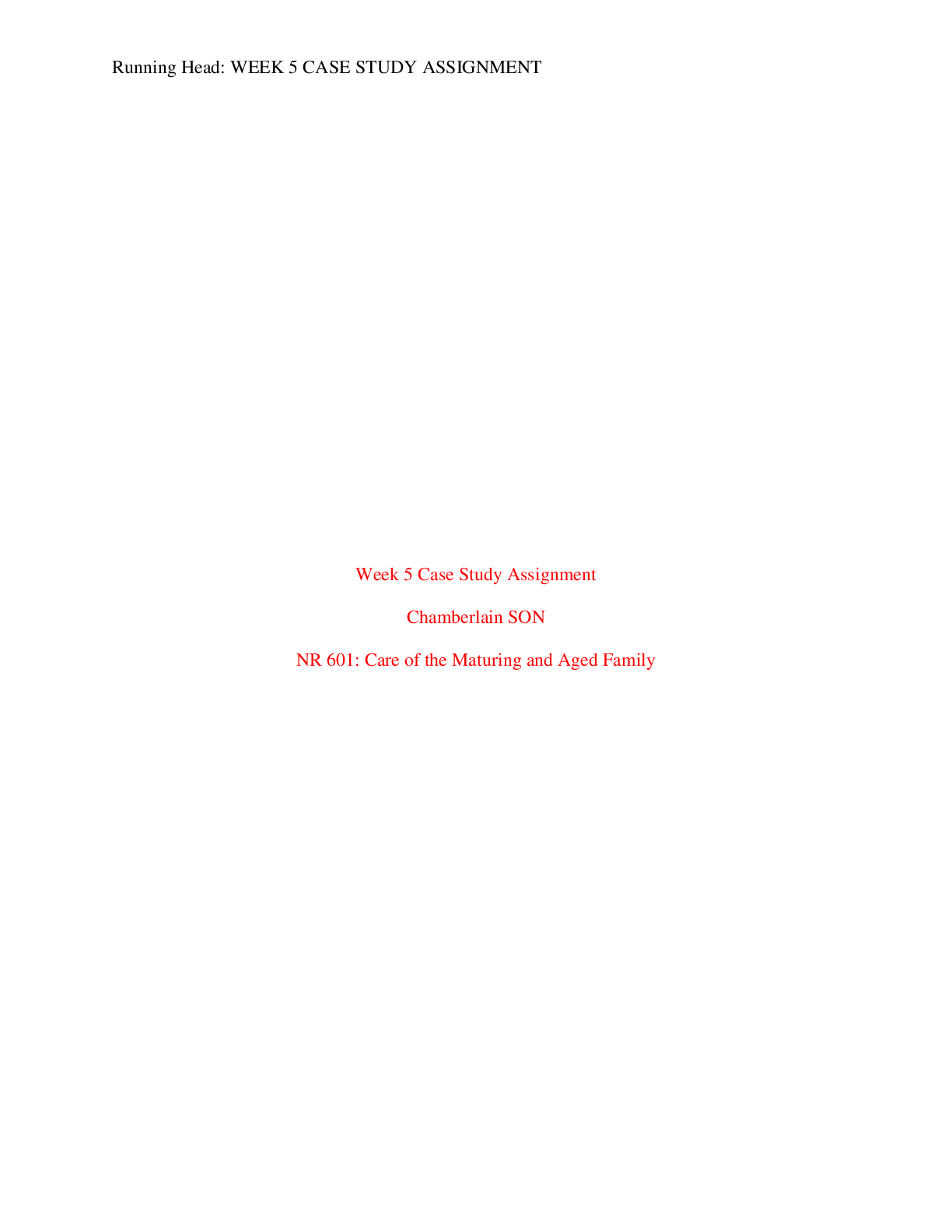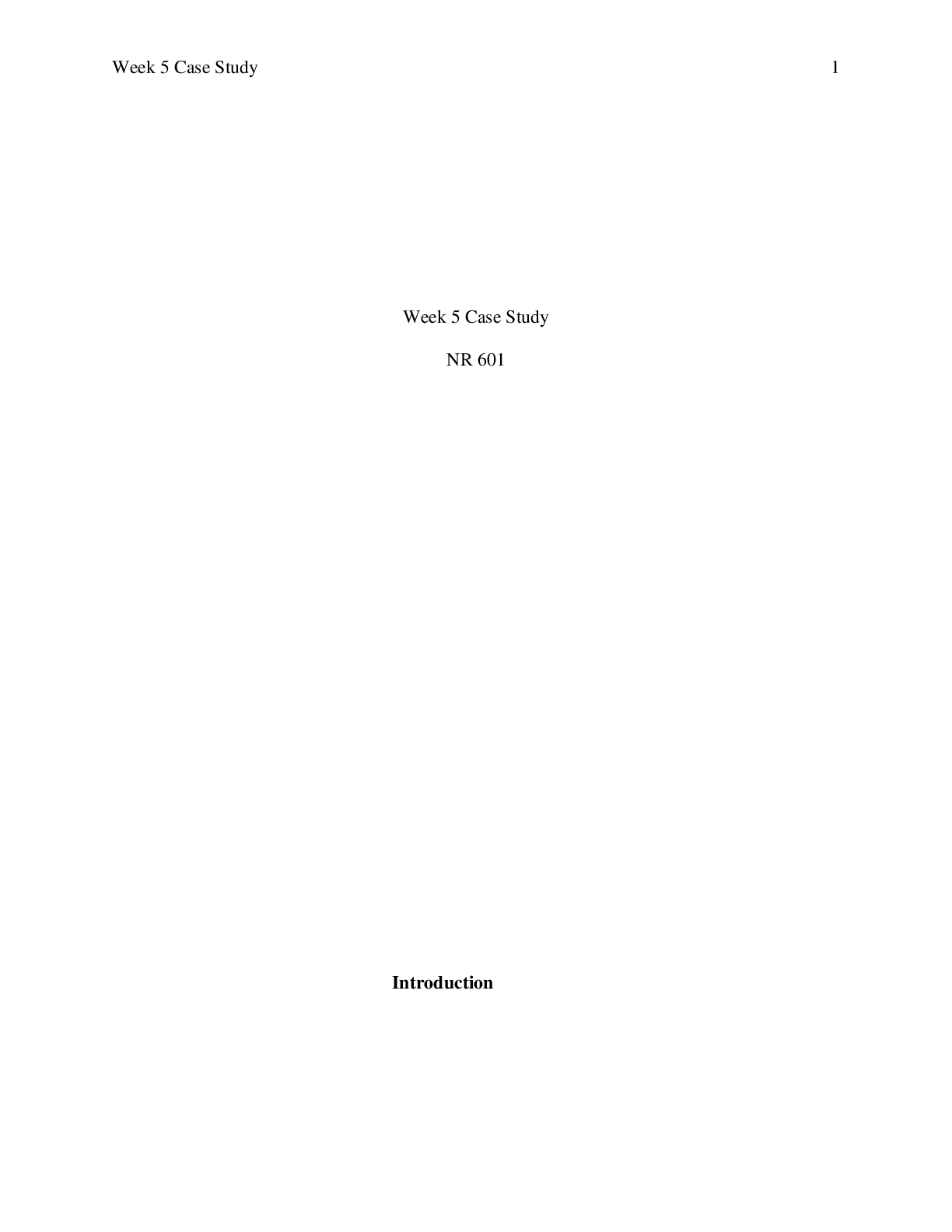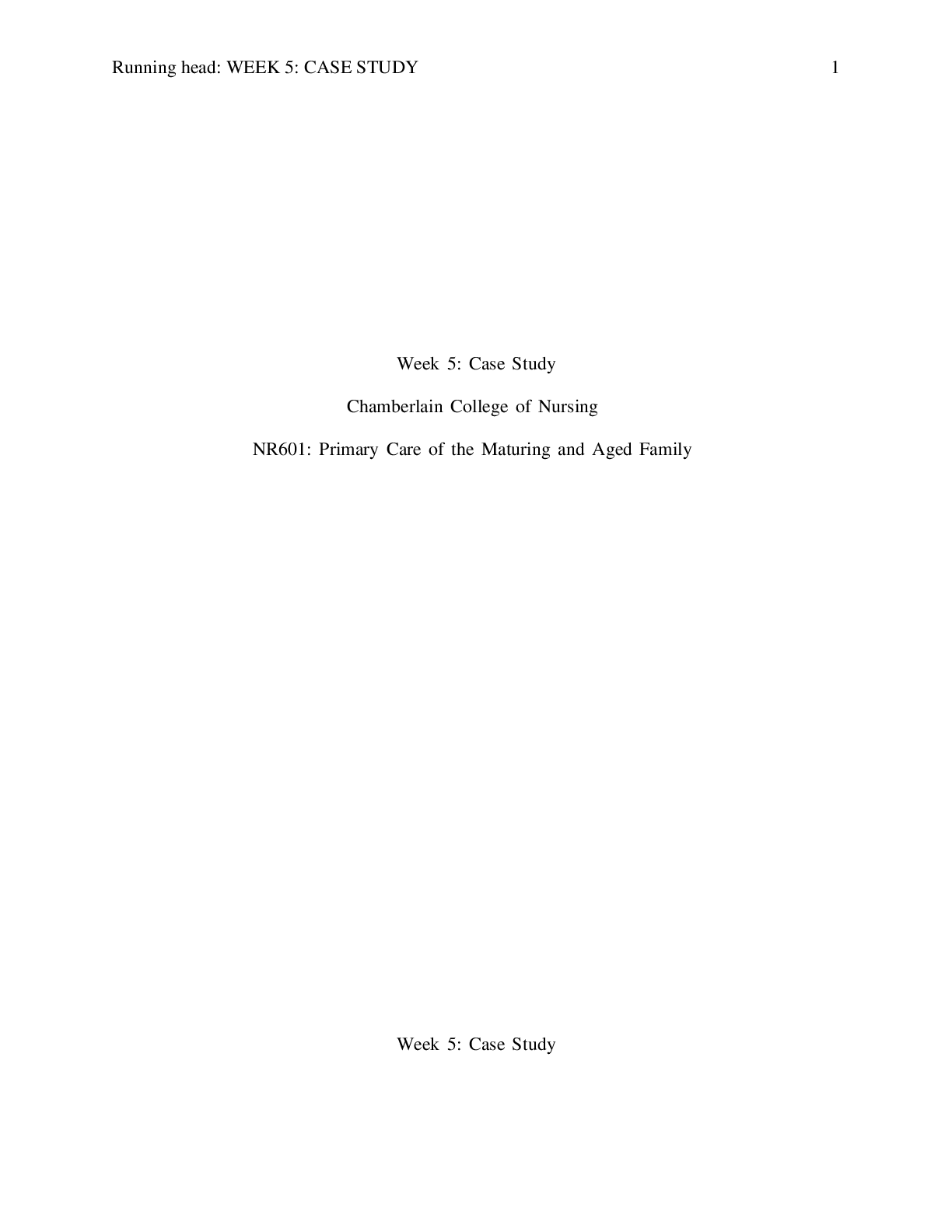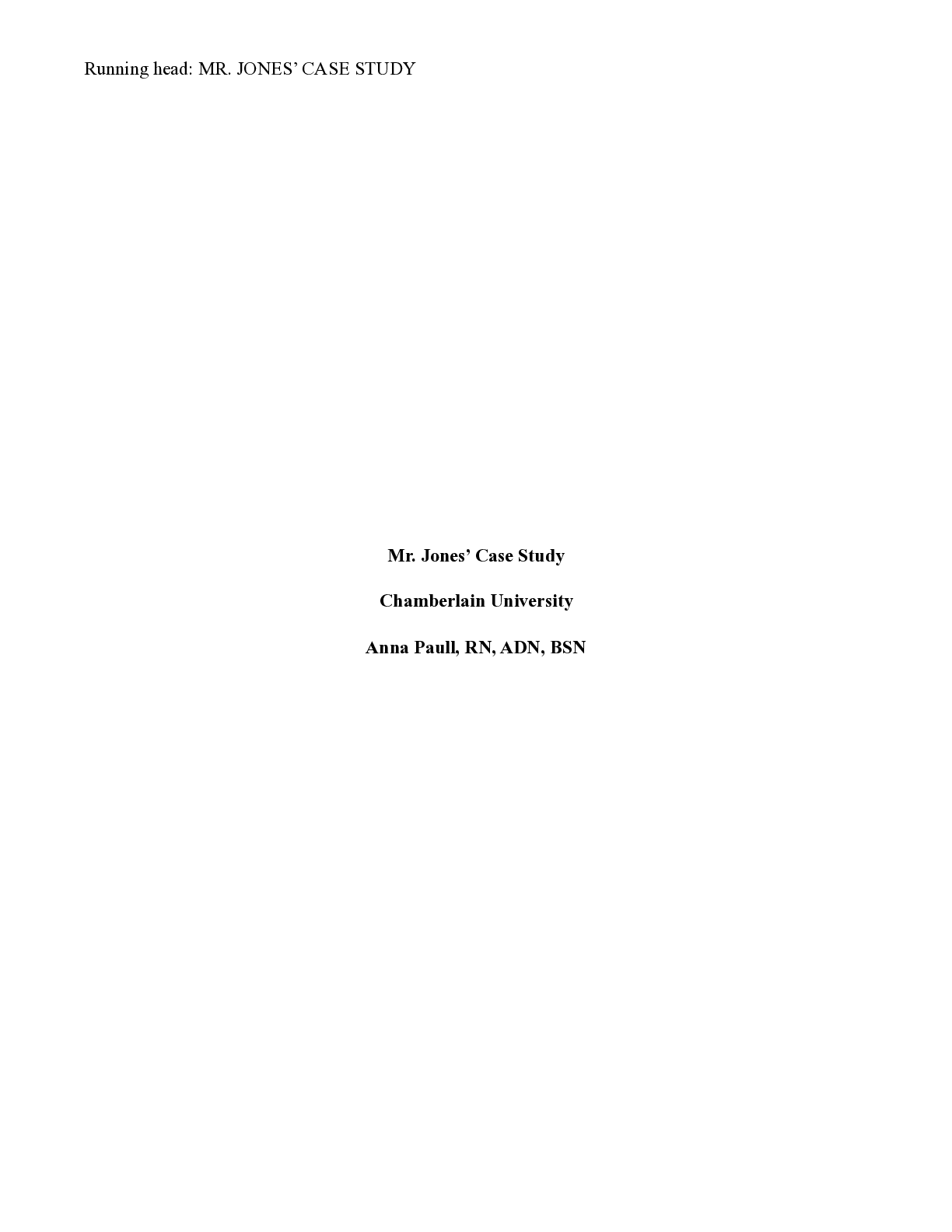*NURSING > CASE STUDY > Chamberlain College of NursingNR 601NR601 _week 5 case study paper template_May 19-1. (All)
Chamberlain College of NursingNR 601NR601 _week 5 case study paper template_May 19-1.
Document Content and Description Below
1 WEEK 5 CASE STUDY Week 5 Case Study Dale Hager Chamberlain College of Nursing NR 601: Primary Care of the Maturing and Aged Family Dr. Jasmia Wallace October 4, 2020 2 WEEK 5 CASE STUDY We... ek 5 Case Study The World Health Organization (WHO) defines diabetes as a chronic metabolic disease with increased blood glucose that eventually causes damage to the heart, nerves, blood vessels, kidneys, and eyes (WHO, 2020). The CDC reported 34.2 million Americans having diabetes, which is 10.5% of the U.S. population (CDC, 2020). Type 2 diabetes mellitus (T2DM) is the most common form that is a result of insulin resistance or loss of insulin secretions from the beta cells (ADA, 2020). The prevalence in initial diagnosis is highest among ages 45-64 and all patients should be screened annually after the age of 45. Any patient with the initial diagnosis of prediabetes or T2DM should be screened and treated for any modifiable CVD risk factors (ADA, 2020). The case study patient is high risk for T2DM and CVD because her BMI is 33.3 and is considered obese. Dyslipidemia is correlated directly with T2DM, and refers to any increased levels of lipids in the plasma. Individualized treatment goals are best to optimize compliance, improve overall health, and well-being for this patient. The treatment goal is to regain control of blood glucose, decrease LDL and triglycerides, increase HDL, improve or maintain quality of life, and delay progression of comorbidities. Assessment Primary Diagnosis: Type 2 diabetes mellitus (E11.9) Pathophysiology T2DM will commonly present with fatigue, polyuria, polyphagia, and polydipsia just as Mrs. G has. As we age, there is a loss of beta cell function and impaired insulin action in the pancreas that is further damaged with obesity because of increased circulation of free fatty acids. The liver then overcompensates with glucose because it develops a resistance to the suppressed insulin effects resulting in a hyperglycemic state that is enhanced by a decreased glucose uptake from inactive muscle use or sedentary lifestyle (Dunphy et al., 2019). [Show More]
Last updated: 2 years ago
Preview 1 out of 10 pages

Buy this document to get the full access instantly
Instant Download Access after purchase
Buy NowInstant download
We Accept:

Reviews( 0 )
$7.00
Can't find what you want? Try our AI powered Search
Document information
Connected school, study & course
About the document
Uploaded On
Sep 29, 2021
Number of pages
10
Written in
Additional information
This document has been written for:
Uploaded
Sep 29, 2021
Downloads
0
Views
222

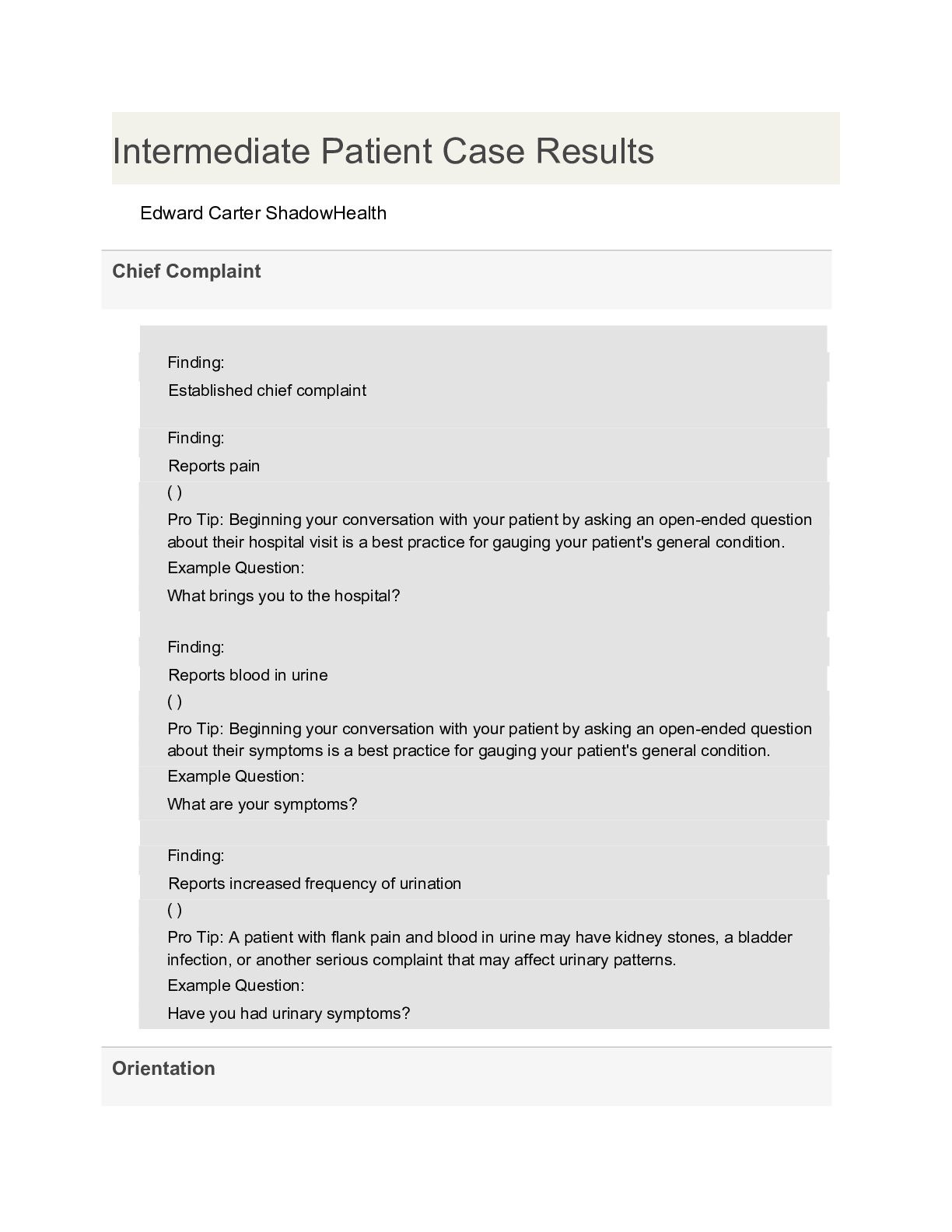

.png)







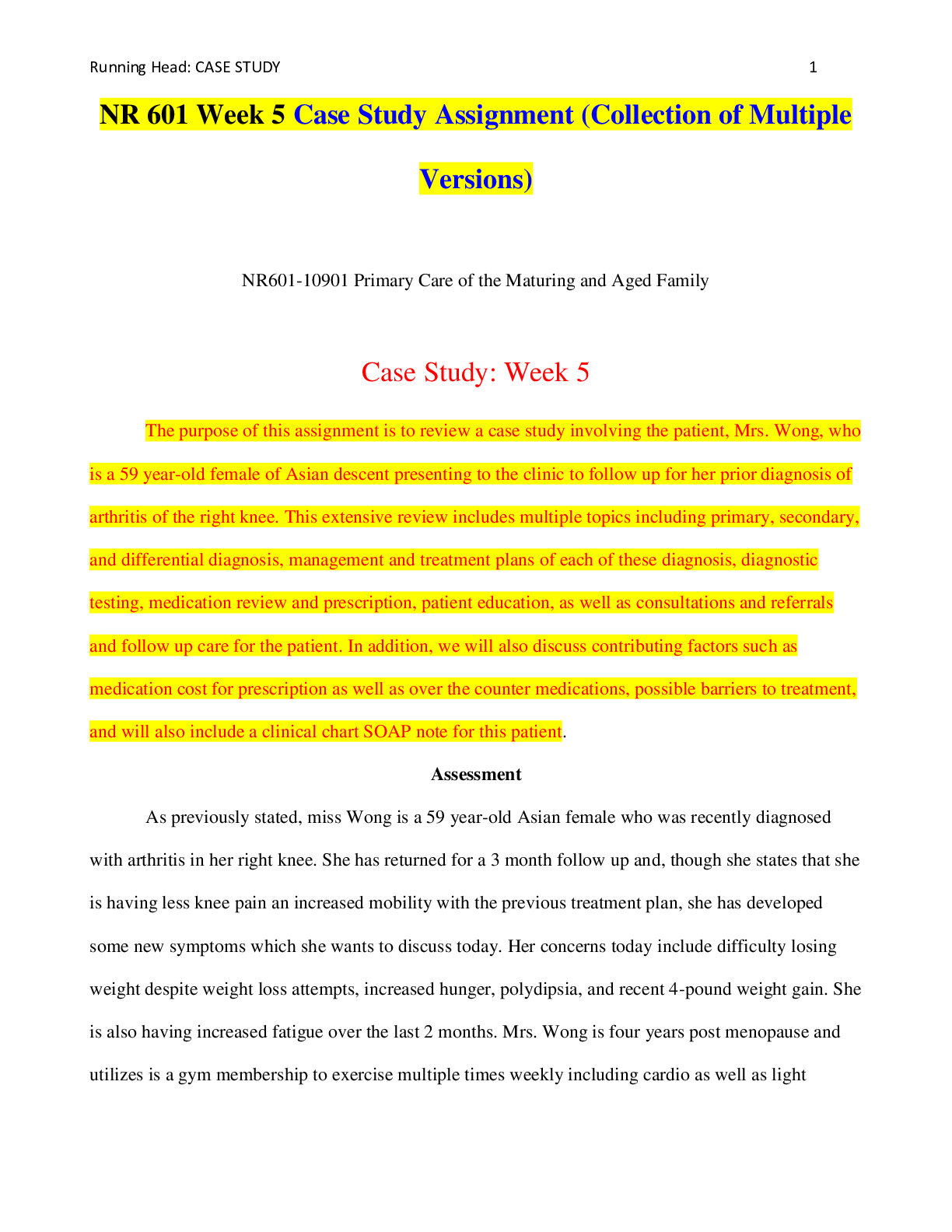
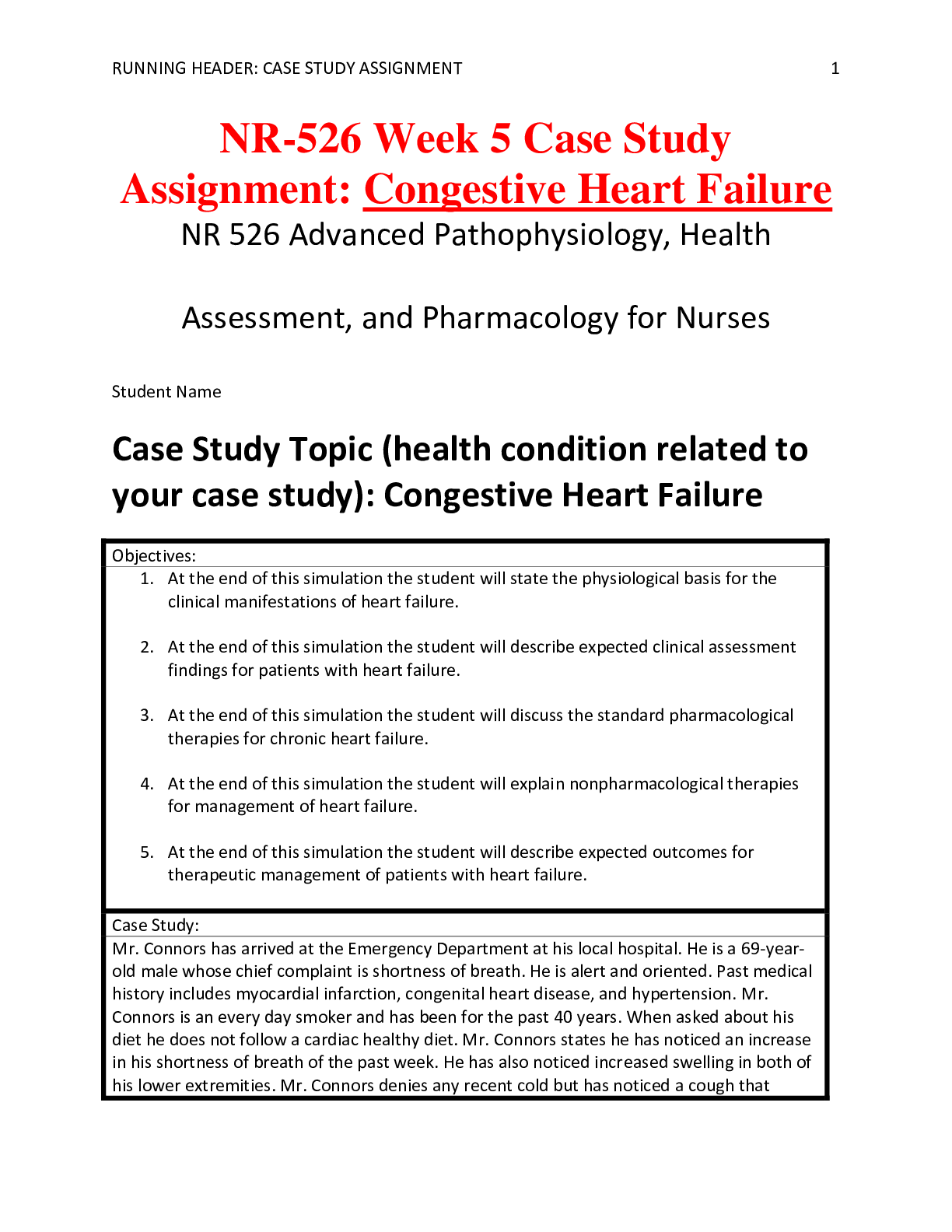

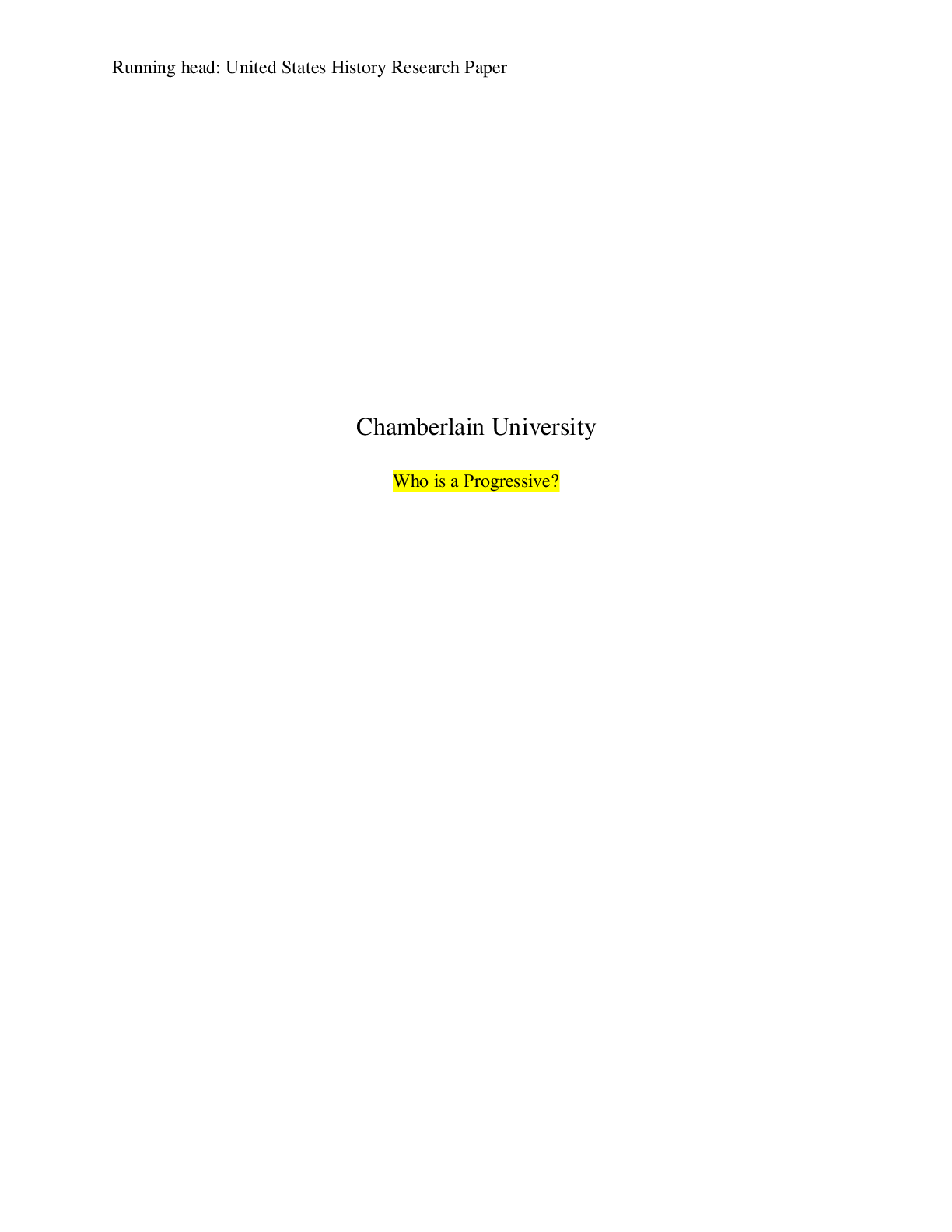
.png)
